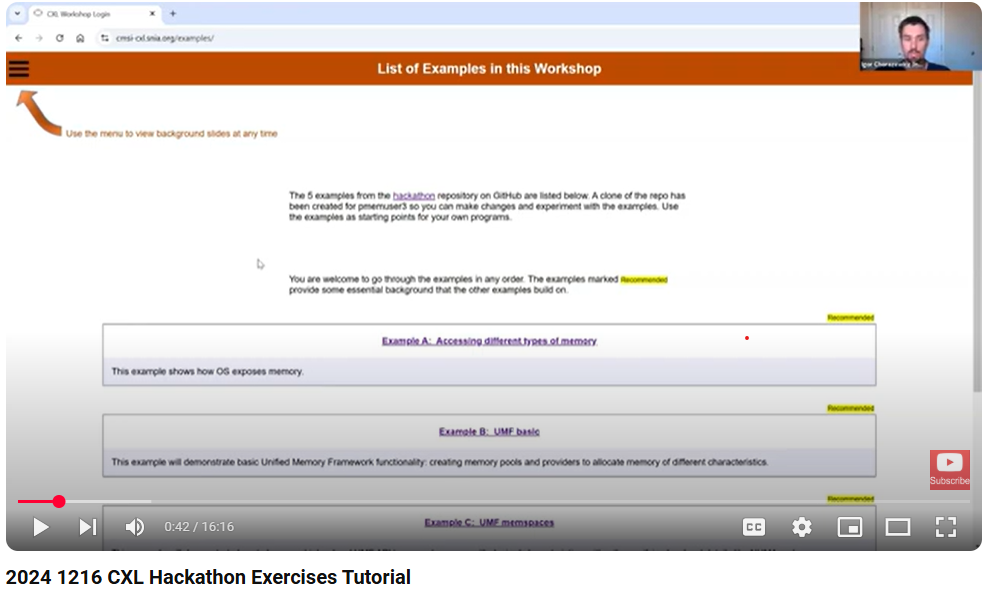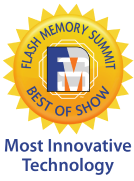updated April 2025
SNIA and the Compute, Memory, and Storage Community technical work and marketing initiatives activities in memory are foundational to the SNIA Data Focus Areas of Accelerate Data and Store Data. The SNIA Persistent Memory Special Interest Group evangelizes and supports SNIA work in this area.
SNIA SDXI Technical Work Group Chair Shyam Iyer provides an update on the SDXI specification at the SNIA Developer Conference
The Compute, Memory, and Storage Community is a leader in enabling users to understand that powerful persistent memory solutions are here today, being standardized, and will be key building blocks of consumer, enterprise and data center solutions for the next decade and beyond.
The Compute, Memory, and Storage Community evangelizes the technical work defining how the industry will use new memory solutions coming to market performed by SNIA member volunteers in Technical Work Groups.
The SNIA Smart Data Accelerator Interface (SDXI) Technical Work Group is developing and standardizing an extensible, forward-compatible memory to memory data mover interface that is independent of actual data mover implementations and underlying I/O interconnect technology.
The NVM Programming Model Specification was completed by the NVM Programming TWG. It describes behavior used by applications and kernel components to access emerging features for traditional block NVM (SSDs), and a new programming model for persistent memory – NVM hardware designed to be treated by software similarly to system memory.
Program Persistent and CXL Memory!
A Persistent Memory Programming Hackathon and Workshop program launched in 2019 by the PM SIG now counts over 500 individuals who are programming persistent memory. New exercises based on the NVM Programming Model Specification are now available to program CXL memory modules located at the SNIA Innovation Lab. Visit the Persistent Memory Workshop and Hackathon page and the SNIA Compute Memory Storage blog for details on upcoming events in your area.
The TWG has also published several Technical White Papers on Persistent Memory Hardware Threat Model , NVM PM Remote Access for High Availability, and Persistent Memory Atomics and Transactions.

Congratulations to the SNIA SDXI TWG and the authors of the Smart Data Accelerator Interface Standard v1.0 for their Most Innovative Memory Technology (Standards) Best of Show Award at the 2023 Flash Memory Summit. Well done!



The SNIA CMS Persistent Memory Special Interest Group(PM SIG) accelerates awareness and adoption of memory technologies in the marketplace through education, providing input to standards organizations, and development of vendor-agnostic user perspective case studies, best practices, and vertical industry requirements to help end user customers understand how products and solutions can meet performance, cost, and efficiency goals.
A Persistent Memory Programming Hackathon and Workshop program launched in 2019 by the PM SIG now counts over 500 individuals who are programming persistent memory. New exercises are now available to program CXL memory modules located at the SNIA Innovation Lab. Visit the [Persistent Memory Workshop and Hackathon] page and the SNIA Compute Memory Storage blog for details on upcoming events in your area.
Visit the CMS Knowledge Center to watch videos about PM, download presentations, view SNIA webinars, and read white papers and articles on PM.
Visit the SNIA event calendar to see upcoming locations where SNIA work related to Persistent Memory will be presented and demonstrated.
The SNIA Compute+Memory+Storage Summit, produced by the SNIA CMSI, delivers the latest thought leadership on future memory trends, the increasing use of Persistent Memory in applications, memory-to-memory data movement, memory and interconnect technologies such as CXL and UCIe, and how to implement in today’s environments.
Visit the Summit page for details on the latest event, videos, presentations, and information on upcoming Persistent Memory Programming Hackathons. SNIA also sponsors memory sessions and presentations at SNIA Storage Developer Conferences worldwide, and at industry events, including FMS - The Future of Memory and Storage Conference.








